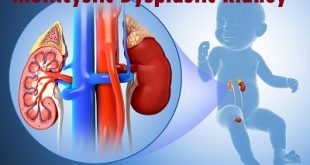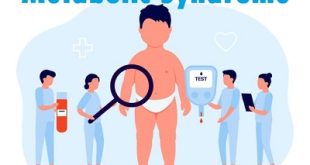Definition
Moyamoya disease is a disorder of blood vessels in the brain, specifically the internal carotid arteries and the arteries that branch from them. These vessels, which provide oxygen-rich blood to the brain, narrow over time. The narrowing of these vessels reduces blood flow in the brain. In an attempt to compensate, new networks of small, fragile blood vessels form. These networks, visualized by a particular test called an angiogram, resemble puffs of smoke, which is how the condition got its name: “moyamoya” is an expression meaning “something hazy like a puff of smoke” in Japanese.
Moyamoya disease commonly begins either around age 5 or in a person’s thirties or forties. A lack of blood supply to the brain leads to several symptoms of the disorder, including temporary stroke-like episodes (transient ischemic attacks), strokes, and seizures. In addition, the fragile blood vessels that grow can develop bulges (aneurysms), or they can break open, leading to bleeding (hemorrhage) in the brain. Affected individuals may develop recurrent headaches, involuntary jerking movements (chorea), or a decline in thinking ability. The symptoms of moyamoya disease often worsen over time if the condition is not treated.
Some people have the blood vessel changes characteristic of moyamoya disease in addition to features of another disorder, such as neurofibromatosis type 1, sickle cell disease, or Graves disease. These individuals are said to have moyamoya syndrome.
Epidemiology
A study indicated that the prevalence of moyamoya disease in California and Washington was 0.086 cases per 100,000 people. In this study, the breakdown based on ethnicity as ratio to whites was 4.6 for Asian Americans, 2.2 for African Americans, and 0.5 for Hispanics.
The incidence of moyamoya disease is highest in Japan. The prevalence and incidence of the disorder there has been reported to be 3.16 cases and 0.35 cases per 100,000 people, respectively.
Moyamoya disease risk factors
Though the cause of moyamoya disease is unknown, certain factors may increase your risk of having the condition, including:
Asian heritage: Moyamoya disease is found all over the world, but it’s more common in East Asian countries, especially Korea, Japan and China. This may possibly be due to certain genetic factors in those populations. This same higher prevalence has been documented among Asians living in Western countries.
Family history of moyamoya disease: If you have a family member with moyamoya disease, your risk of having the condition is 30 to 40 times higher than that of the general population — a factor that strongly suggests a genetic component.
Medical conditions: Moyamoya syndrome sometimes occurs in association with other disorders, including neurofibromatosis type 1, sickle cell disease and Down syndrome, among many others.
Being female: Females have a slightly higher incidence of moyamoya disease.
Being young: Though adults can have moyamoya disease, children younger than 15 years old are most commonly affected.
Causes of moyamoya disease
There is no known direct cause of Moyamoya, but it is more commonly found in children of Asian descent, or children who have had brain radiation.
Children with other disorders that affect blood flow to the brain can be diagnosed with Moyamoya, including:
- Sickle cell disease
- Down syndrome
- Hyperthyroidism
- Neurofibromatosis
- Congenital heart disease
Symptoms of moyamoya disease
The greatest risk of Moyamoya disease is stroke, but it can cause a wide range of neurological symptoms, including:
- Headache or dizziness
- Weakness or paralysis in a limb or on one side of the body
- Problems with speech inability to speak or recall words
- Sensory or cognitive impairment
- Involuntary movements
- Seizures or loss of consciousness
- Vision problems
Some of these symptoms are signs of a stroke or transient ischemic attack (TIA), which requires immediate emergency treatment. Early diagnosis and treatment of Moyamoya is critical to avoid irreversible brain damage, so anyone experiencing these symptoms should be evaluated immediately.
Complications
Most complications from moyamoya disease are associated with the effects of strokes, including seizures, paralysis, and vision problems. Other complications include speech problems, movement disorders and developmental delays. Moyamoya disease can cause serious and permanent damage to the brain.
Diagnosis and test
Imaging technologies help doctors diagnose Moyamoya, confirm a diagnosis and plan for surgery, if needed. Those used most often include:
Magnetic resonance imaging (MRI): This test uses a magnetic field and radio waves to produce detailed pictures of the brain and brain stem.
Magnetic resonance angiogram (MRA): This test uses a magnetic field and pulses of radio wave energy. It provides detailed pictures of blood vessels inside the body.
Computed tomography (CT): This procedure uses special X-ray equipment. It creates detailed, cross-sectional images of internal organs, bones, soft tissue and blood vessels.
Cerebral angiography: This procedure uses a special dye (contrast material) and X-rays. It helps doctors see how blood flows through the brain.
Treatment and medications
If you’re diagnosed with moyamoya disease, your healthcare provider may suggest certain medications:
Aspirin: Aspirin can help prevent blood clots in the small blood vessels that were formed as back-up.
Anticonvulsants: These medications can prevent seizures caused by moyamoya disease.
Anticoagulants: Anticoagulants can thin the blood to prevent blood clots. But these drugs have risks, such as possible bleeding that’s difficult to stop. They’re only prescribed in certain cases.
Calcium channel blockers: Calcium channel blockers can lessen headaches from moyamoya disease. But these drugs can also lower blood pressure, potentially increasing stroke risk. They’re only used in certain cases.
Medications can’t stop blood vessels from narrowing, so moyamoya disease may continue to grow worse. Your healthcare provider may then consider surgery in the form of a bypass.
Surgical treatments
Several surgical treatments for moyamoya are effective at bypassing narrowed arteries and creating a new blood supply for the affected areas of the brain.
There are several types of surgical treatments for moyamoya:
Pial synangiosis: This is a type of surgery that reroutes the healthy scalp blood vessel to the brain, bypassing the narrowed vessels.
EDAS (encephaloduroarteriosynangiosis): In this procedure, the superficial temporal artery in the child’s brain is laid over an opening in the cortex. The artery is then sewed to the dura (the firm layer of tissue that covers the brain). Over time, small new arterial vessels begin to develop.
EMS (encephalomyosynangiosis): In this procedure, small portions of the temporalis muscle in the jaw are attached in a parallel direction to the surface of the child’s brain. The transplanted muscle gradually generates new blood vessels, forming a supplementary source of blood flow to the brain.
Omental transposition/transfer: In this procedure, the child’s omentum, the blood-rich lining that surrounds the organs in the abdomen, is laid over the surface of the brain. New vessels eventually develop and grow into the brain.
Dural inversion: In this procedure, neurosurgeons invert the flaps of fibrous dural tissue on the child’s meningeal vessel, a large artery within the skull. This places the outer dural surface, which has plentiful blood vessels, in direct contact with the parts of the brain that were previously deprived of essential blood flow.
Direct arterial bypass: This surgery is also known as superficial temporal to middle cerebral artery anastomosis, or STA-MCA bypass. During this procedure, neurosurgeons join a blood vessel from the child’s scalp directly to a vessel in the brain. Blood flow throughout the brain should improve over the next several months.
Prevention of moyamoya disease
In cases of genetic forms of moyamoya disease, nothing definitive has been proven to prevent moyamoya disease. However, moyamoya syndrome can be prevented by vascular risk factor control and reducing your risk of atherosclerosis.
You may be able to relieve symptoms and avoid complications from moyamoya disease if you make sure you take your medications exactly as directed.
 Diseases Treatments Dictionary This is complete solution to read all diseases treatments Which covers Prevention, Causes, Symptoms, Medical Terms, Drugs, Prescription, Natural Remedies with cures and Treatments. Most of the common diseases were listed in names, split with categories.
Diseases Treatments Dictionary This is complete solution to read all diseases treatments Which covers Prevention, Causes, Symptoms, Medical Terms, Drugs, Prescription, Natural Remedies with cures and Treatments. Most of the common diseases were listed in names, split with categories.








how Can I treated this disease if am in this situation
Please consult a doctor to get the treatment for this disease.